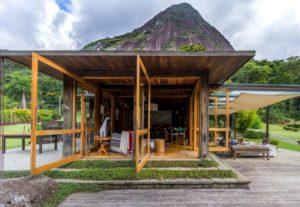Post Contents
Portola Valley, United States – Field Architecture
Built Area: 297.29 m2
Year Built: 2015
Photographs: Steve Goldband, John Merkl
Forty-One Oaks is a spacious home located in a wooded section near San Francisco. The house was named as such because it’s the exact number of oak trees in the property. The architects made sure that they preserve the existing flora and fauna while building the house.
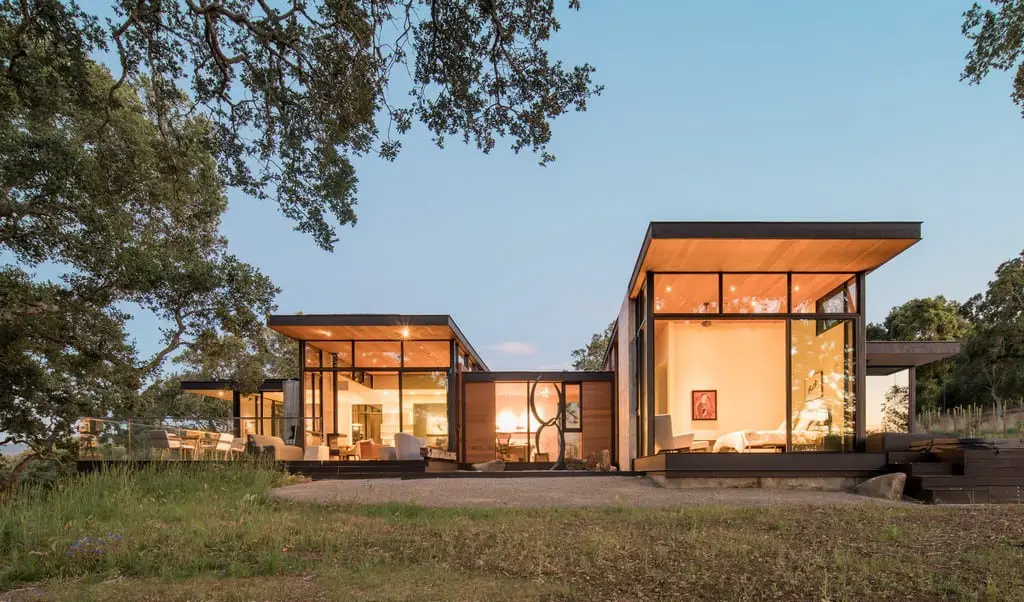
The clients wanted a home that feels like a part of the surrounding landscape. To address this, the architects designed a home wrapped in cedar, concrete, and huge spans of glass. It has a flat roof with deep overhangs.
The interiors feature an open, fluid layout combined with contemporary décor. Ceilings are made of warm timber, complimenting rooms painted in white and grey tones. Black metal frames large glass panes that offer substantial views of the outdoors.
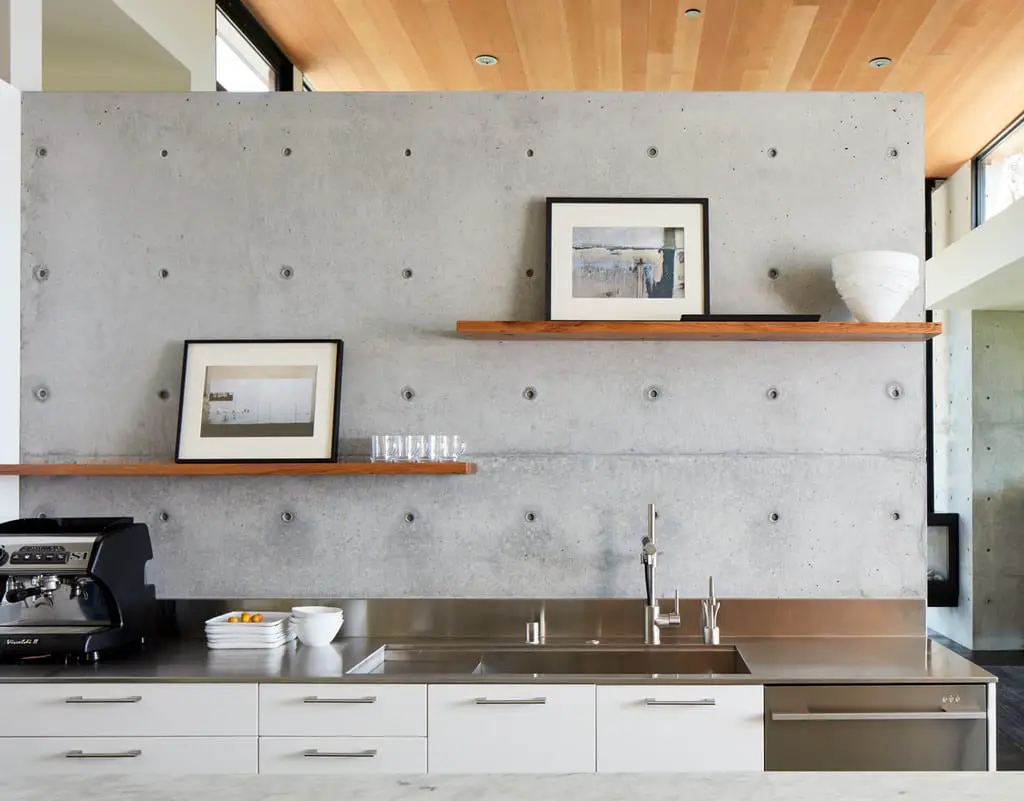
Forty-One Oaks has several outdoor terraces, where one can observe animals in their natural habitat. Mountain lions, bobcats, and deers are often seen roaming around the property, oblivious to human activity.
Notes from the Architect:
There are forty-one oaks within this Portola Valley lot. They lie within the boundaries, dotting the rolling hills and shading the ground with their canopy. The clients, a couple retired from corporate careers and now immersed in their passion for photography, wanted the home to feel like a continuation of the landscape; they hired Field Architecture, a firm with a long history of designing homes that act in conversation with their site.
Jess Field sees the landscape’s orientation as “an invitation” from the oaks. The architectural response was to create a series of pavilions, including a guest house, tennis court, and Zen garden. Together, they allow for a porosity that connects the oaks with only the lightest of touches.
A sense of promontory is felt strongest in the dining room, where a sleek window box cantilevers over the hillside. It frames a view of the rich forest landscape and the unending Bay views off in the distance. The frame is simple: a warm wood floor and cool concrete walls, a visual respite from the liveliness outside. The trees formed the foundation of this material palette; the concrete elements take on the strong verticality of tree trunks, and the steel horizontal cantilevered canopies shelter with the same grace as sloping branches — an architectural echo of the form of the oak tree.
Field Architecture puts landscape at the core of their work, expanding on the narrow idea of “site” (the earth between four plot markers) into a profoundly holistic reading of place. They see the landscape as the domain of nature, looking beyond land and plotlines to see the mountain lions, jack rabbits, rocks, and trees already at home there. Part of that involves a careful observation of the patterns of the sun and micro-climate of Portola Valley to maximize thermal management, using the passive heat-gaining properties of the concrete walls and carefully positioned ventilating windows to keep the 3,200 square-foot home comfortable through the year.
That careful observation also led them to recognize and preserve a wildlife corridor running through the site, allowing the homeowners to watch deer, bobcats, and mountain lions parading through the property, performing their own nighttime rituals as the homeowners perform their human rituals of cooking, conversing, and entertaining.
Making that delineation permeable, a glass wall in the living room slides open onto an outdoor terrace, while the master bedroom opens onto a contemplative space reserved for a Japanese rock garden. As Stan Field has observed, “the feeling of being on the precipice generates a heightened sense of anticipation.” The glass both marks and questions the distinction between the human and animal realms.
Click on any image to start lightbox display. Use your Esc key to close the lightbox. You can also view the images as a slideshow if you prefer ![]()
Exterior Views:


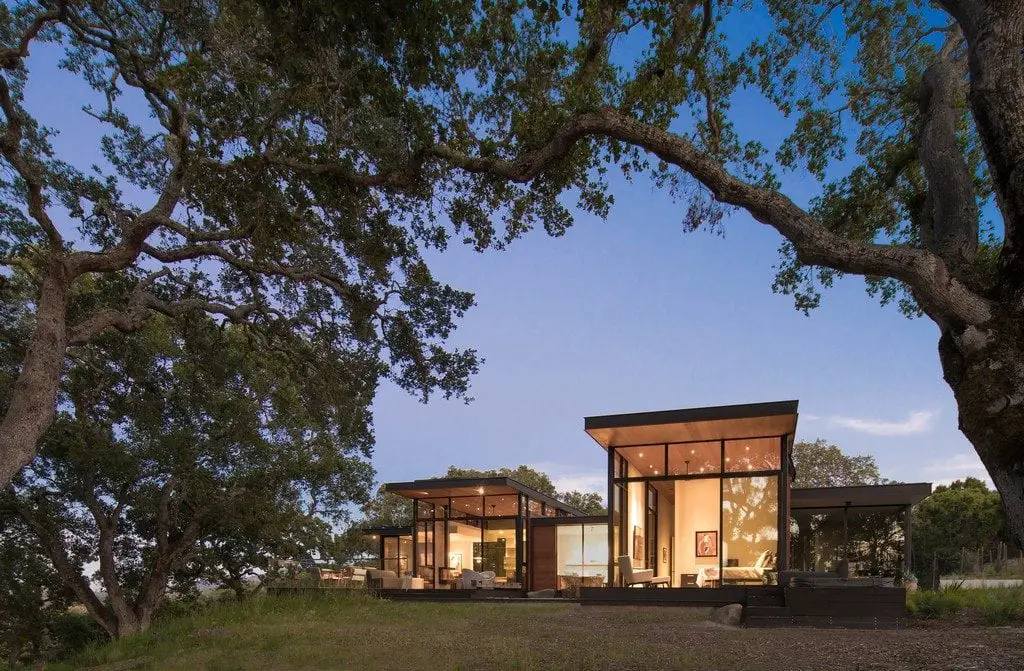


Interior Views:


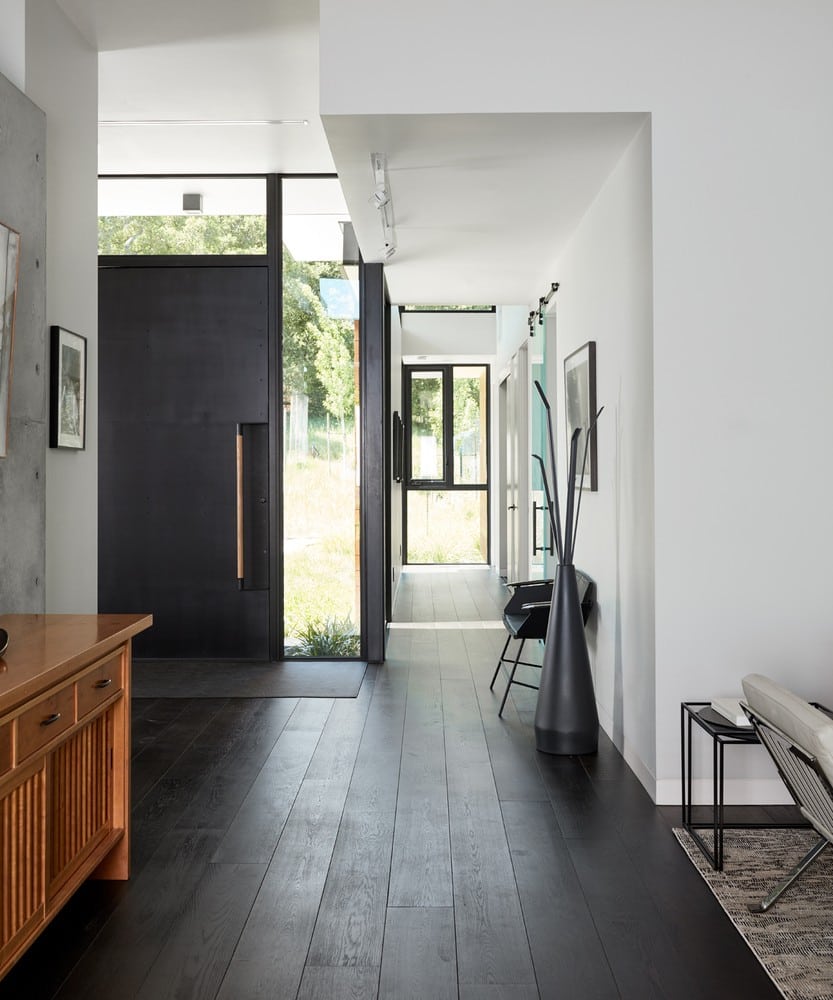
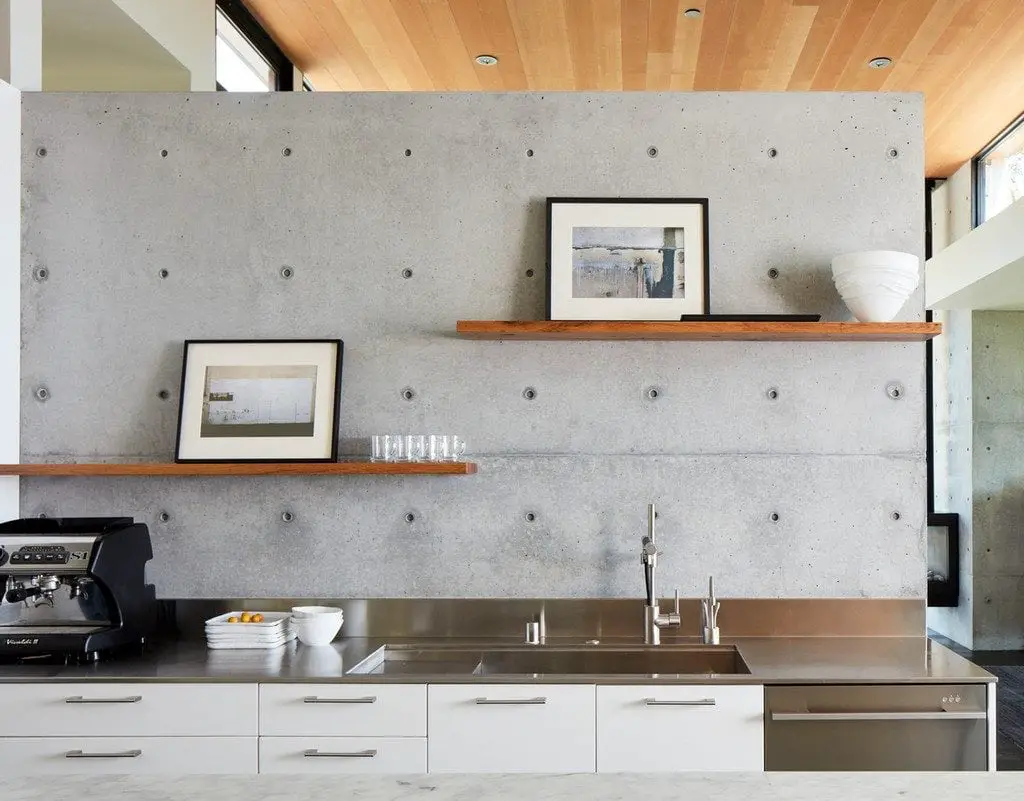
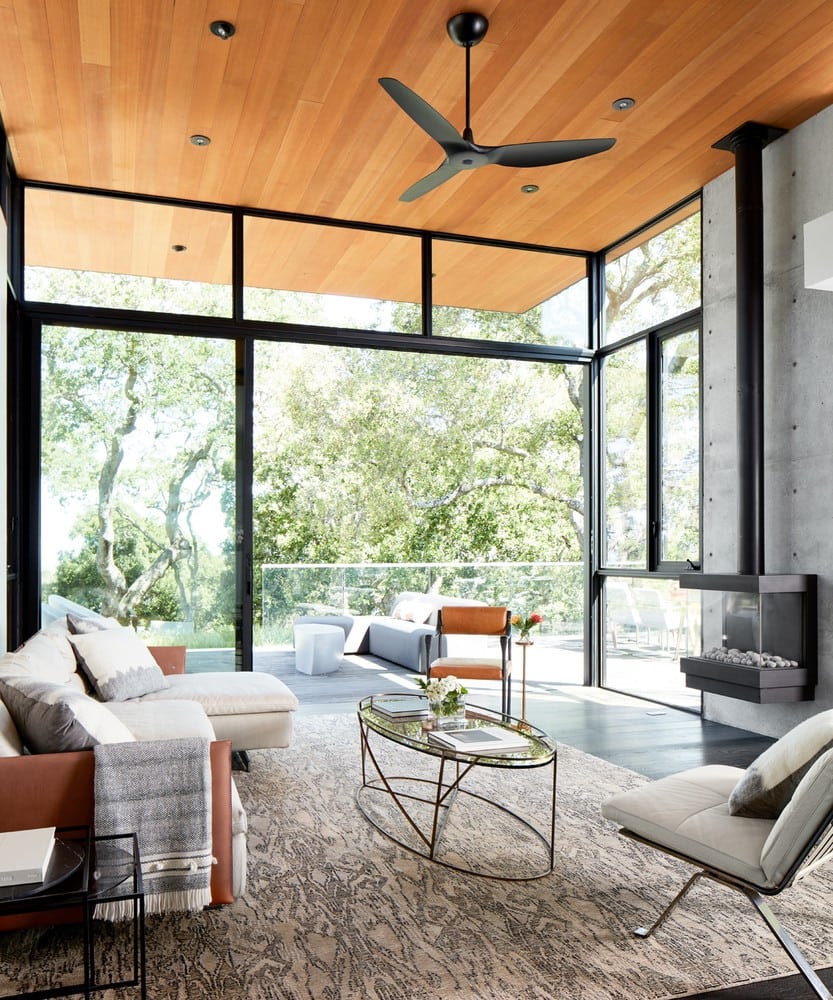
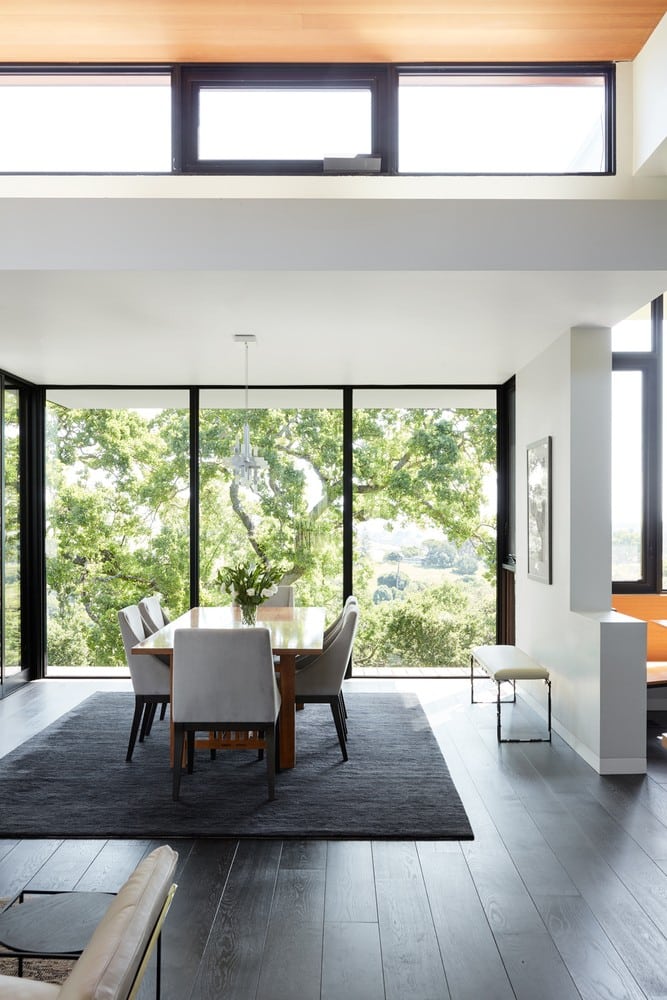

Drawing Views:
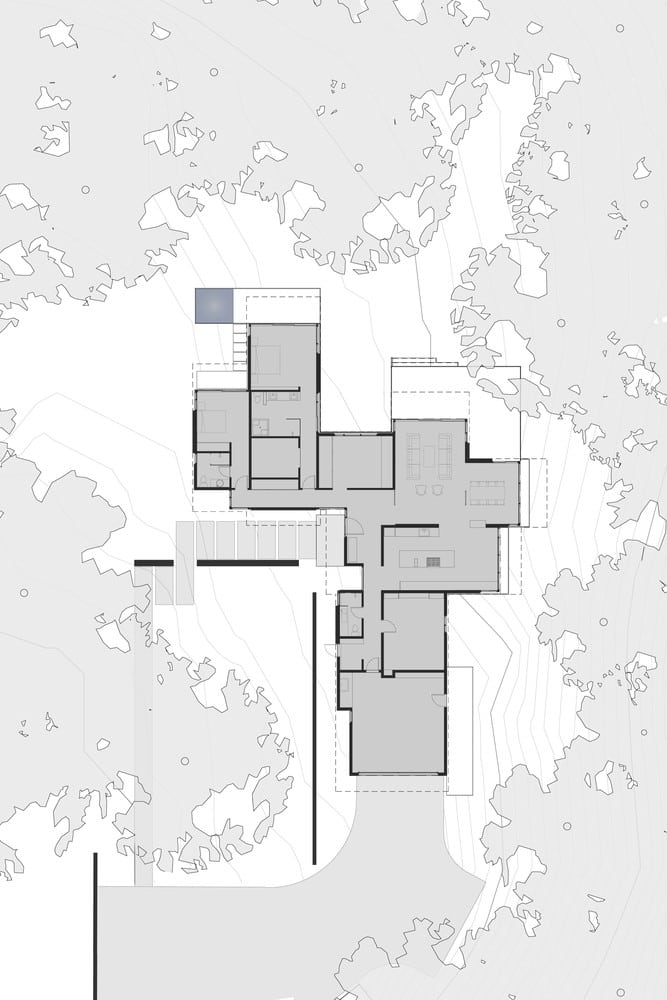

If you love houses of this type, then you’ll also love Casa Terra.


